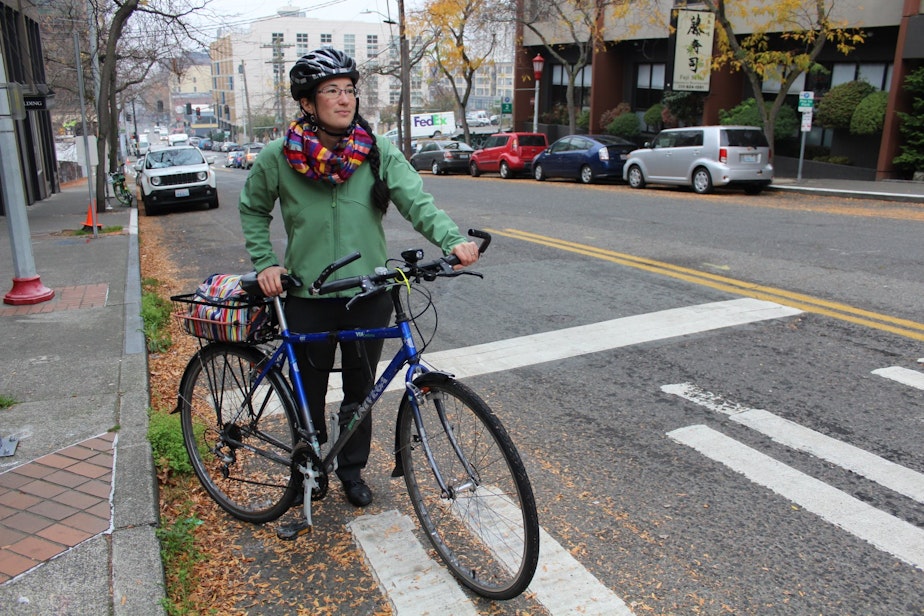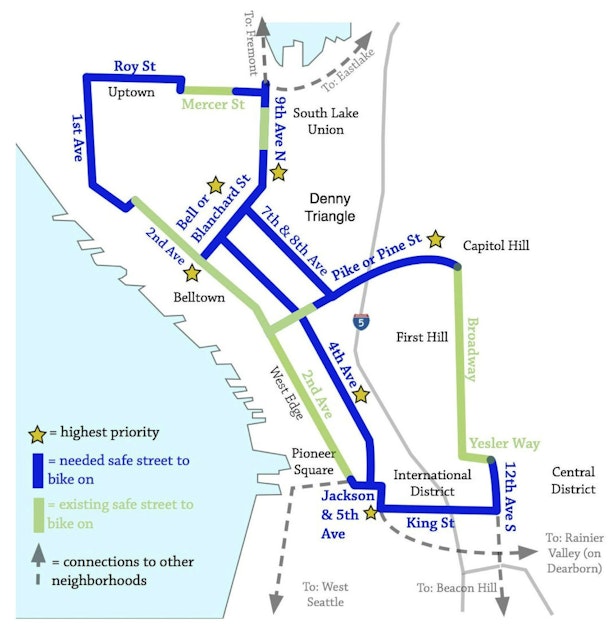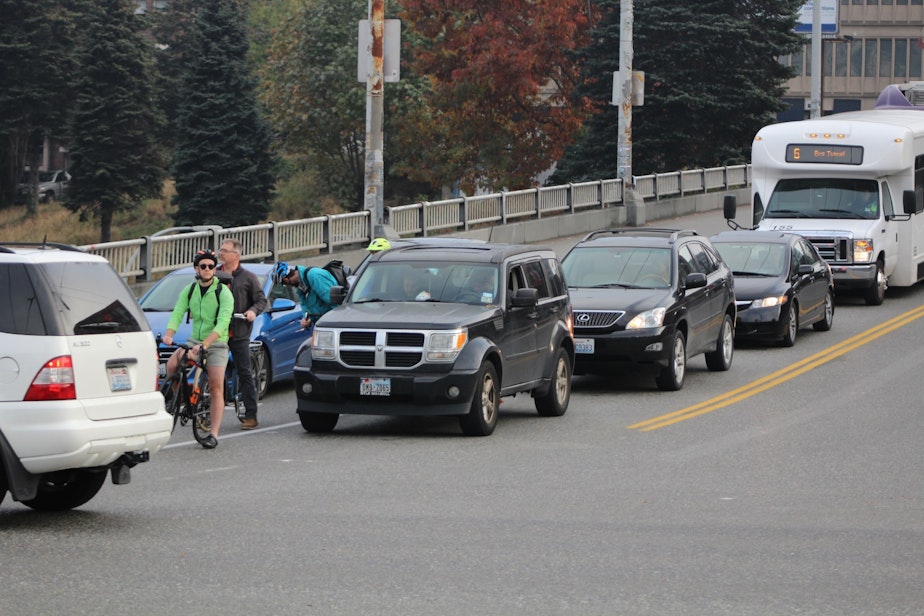The uphill sprint to build a protected bike lane network in downtown Seattle

Seattle’s “basic bike network” is planned as a figure-eight of protected bike lanes that take people into and through downtown.
City officials have committed to building big pieces of the network by the end of 2019. As designs for the missing pieces take shape, stakeholders still have some opportunities to influence what a connected network should look like.
One challenge with bike lanes in general is that they tend to get built or painted one small segment at a time, according to Clara Cantor of Seattle Neighborhood Greenways. She said this piecemeal approach can actually be dangerous.
As the Basic Bike Network takes shape, she and other bike advocates are doing what they can to make sure the network actually works for cyclists and isn’t just a line on a map.

To demonstrate why protected bike lanes are necessary, Cantor took me to Pine Street and Boren. Just up the hill on Pine Street, 20 percent of the road's total traffic are bikes, Cantor said.
It’s not safe, as bikes may be “doored” when unsuspecting drivers open their doors into the lane, but at least the bike lane provides some safety, Cantor said.
Then, where Pine Street crosses over the freeway, the bike lane suddenly ends. “It dumps people on bikes into this high volume intersection, with a lot of cars doing a lot of crazy things,” Cantor said.
Sponsored

The street design doesn’t help much, either, because a few blocks down, when Pine Street becomes one way, a protected bike lane finally offers cyclists some safety as they enter downtown – but it’s on the other side of the street. Bike riders must weave through lanes of traffic to reach it.
If there’s a better way, cyclists, businesses and neighbors hope to find it on Thursday evening, when they gather to plan bike-related upgrades to the Pike-Pine corridor. The corridor will become part of the city’s network of protected bike lanes in 2019, and there’s still time to influence the route and how it’s built.
Cantor wants as many people to be involved in planning Pike-Pine, in part because of what’s happening at the south end of the Basic Bike Network.

Sponsored
She took me to South Main Street, part of the southern loop of the "figure eight" of protected lanes that will help bring riders from South Seattle into downtown.
“We’ll see how this goes. I might downshift some more,” Cantor said, looking up the Main Street, with me on a Limebike beside her. At first, it seemed like a reasonable route – not too different from the gradual slope of Second Avenue that brought us here.
At Fifth Avenue, we passed the spot where many bike advocates would like the lane to turn south again through the International District. But instead, the plan is for the lane to continue east up a steep hill (11 percent grade).
Cantor, who described herself as young and fit, was breathing heavily halfway up the hill. “It’s pretty steep for a bike lane. I am in my lowest gear right now,” she said.
It might not be so painful if it weren’t for the fact that at the top of the hill, where the proposed bike lane finally does turn south, the cyclist gives up all the elevation they just gained by heading downhill again. Cantor believes strong riders and people on ebikes will take the route – but others will avoid this segment, reducing the value of the investment the city is making in the lane.
A spokesperson for Seattle’s Department of Transportation said the planned route makes the most sense because the flatter route, on Fifth Avenue, will soon be full of buses that formerly ran through an underground tunnel.
That’s one of several complications contributing to traffic during the so-called “Period of Maximum Constraint” — a two year period where a slurry of construction and infrastructure projects will lead to intense gridlock in downtown Seattle.
Bike advocates want a promise that the bike lane could move to the flatter route when traffic is expected to ease up slightly in 2021.




